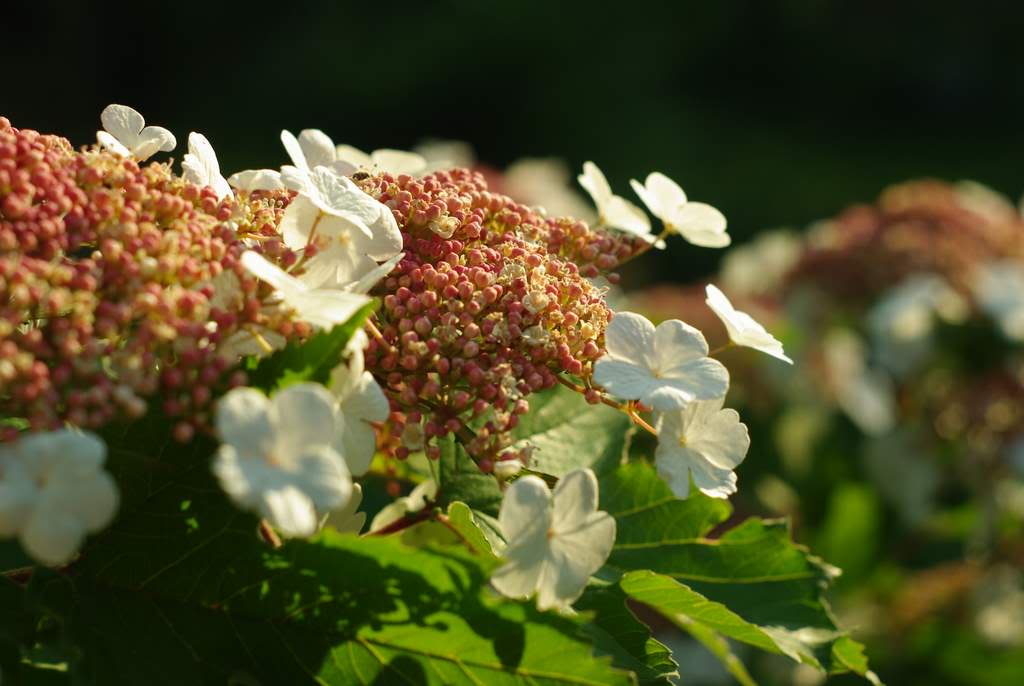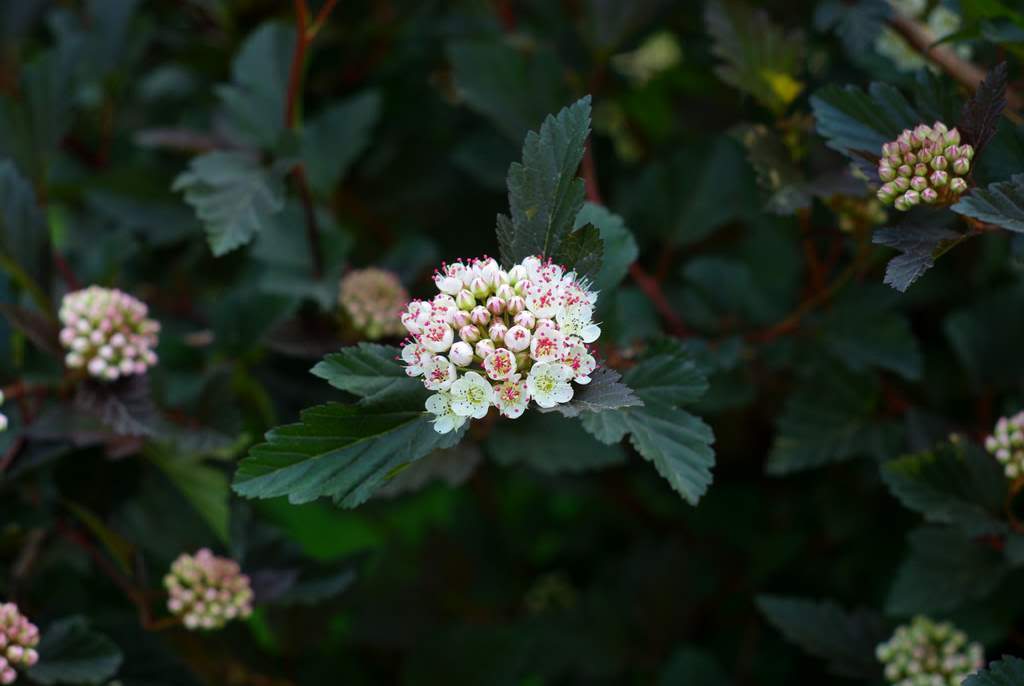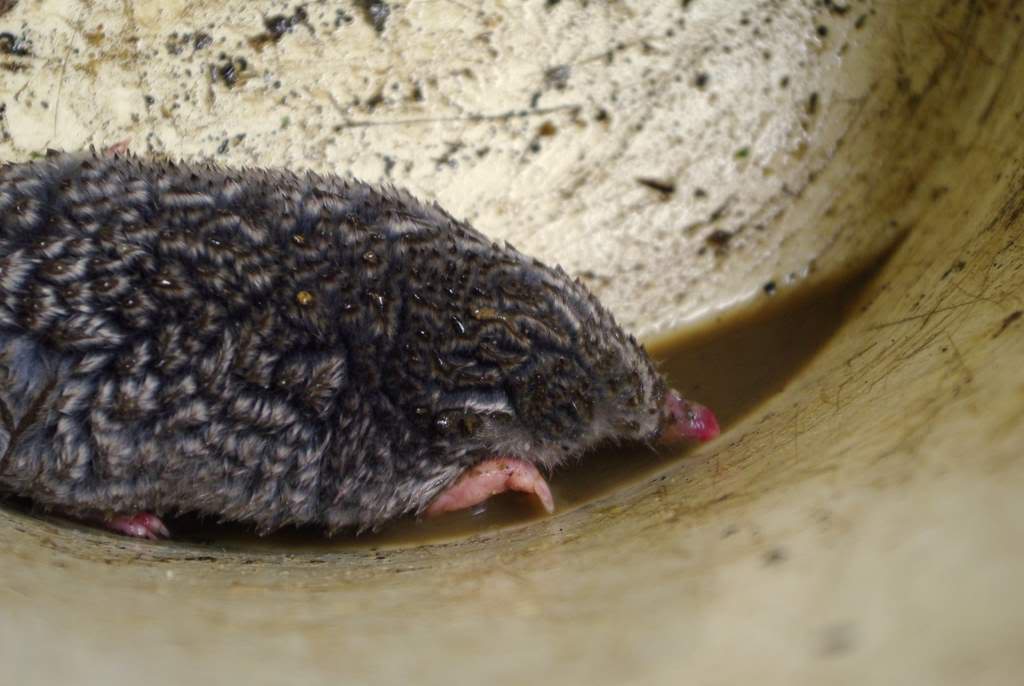So I'll get something cool, like this Viburnun sargentii 'Onondaga', keep it in a pot for a year or two (unless it's too big already), then decide where to put it.
Sometimes the strategy is "here's an empty spot that needs a bigger plant", and sometimes I even put a little more thought into it, taking into account the plant's reported mature size.
Planning is good, but I like gardening "from the heart" -- too much thinking makes gardening less fun for me. Keep this in mind when planning though: plant tags are sometimes wrong. Take for example this "Summer Wine" ninebark, Physocarpus opulifolius 'Seward':
It's a great plant that I love. Dark foliage on arching branches, exfoliating bark that you can only see in Winter, and beautiful white flowers in Spring (they're just starting to open now):
The problem is, it's kind of a monster. The tag says that it will be 5-6' tall, and 3-4' wide. I might go along with the 6' tall, but the branches are so long and arching that right now it is probably 8-10' wide. It does need a bit of a pruning, but that may just make it taller (once the arching branches spring up). It makes the path around it a little cramped, especially when the butterfly bushes get larger later in the growing season, but I like having plants you need to push past a bit to get around. It adds to the sense of "discovery" in the garden I think.
Moving on:
That is Weigela "Wine & Roses". It's still in a pot, and I've not decided what to do with it yet -- perhaps a larger pot this year. I got it for only $2 on a clearance rack at Lowe's a couple of years ago. It wasn't much to look at then, but it's doing pretty well now.
Here's a quick look at a common variegated Euonymous of some sort (again picked up on a clearance rack). I think it looks good in front of the "Lady in Red" Hydrangea, don't you?
This last one is difficult to show in photos -- they just don't do it justice. It's "Dappled Japanese Willow", Salix integra 'Hakuro-nishiki':
Since my plants are relatively small, they don't have the fully branched look of mature specimens and it's hard to capture all of the variations in colors. New leafs start out with a pinkish coloring, then fade to white, with green streaks added as the leaves get older, finally turning mostly green with some white later.
It's just beautiful! I think I'll keep one of these in a large pot for a few years, and I'll probably put one toward the back of the yard in the "deer zone" to see if they will eat it. Like all willows, it's very easy to take cuttings and turn them into new plants, so I'm not too concerned if they decide to eat the entire thing.
Oh, one last thing:
MoleMeter 2010 mole capture count: 04










No comments:
Post a Comment